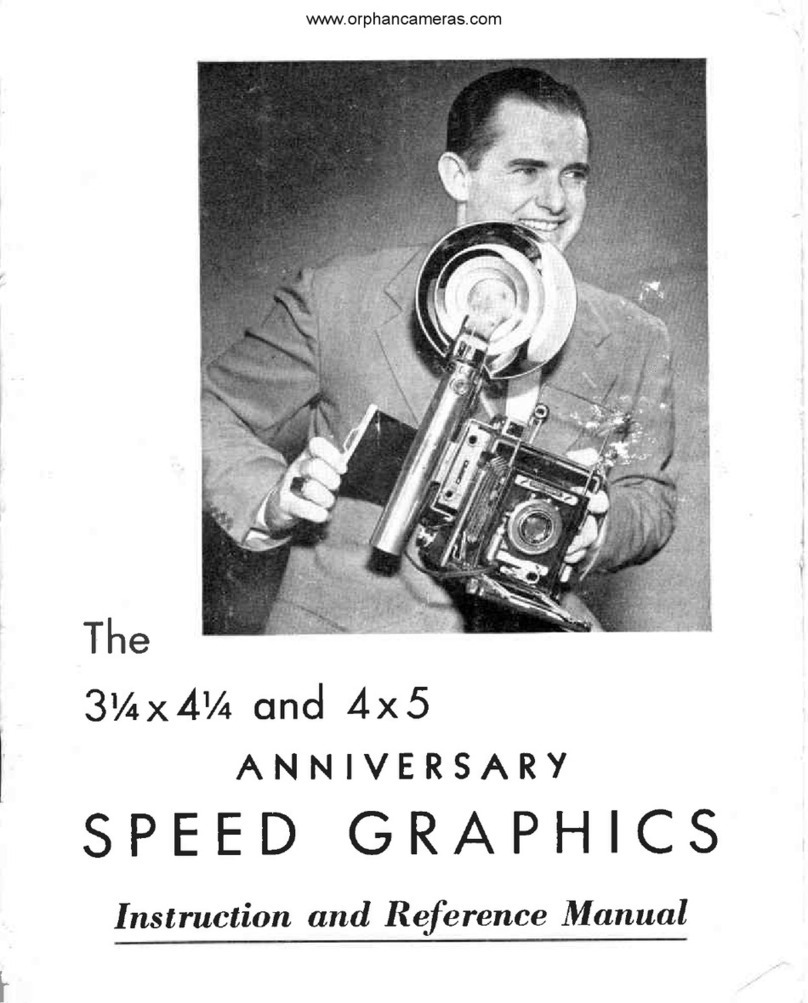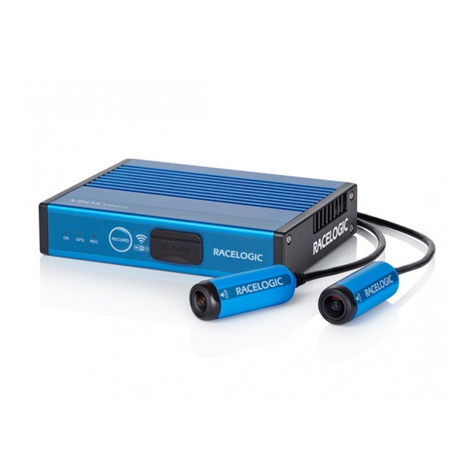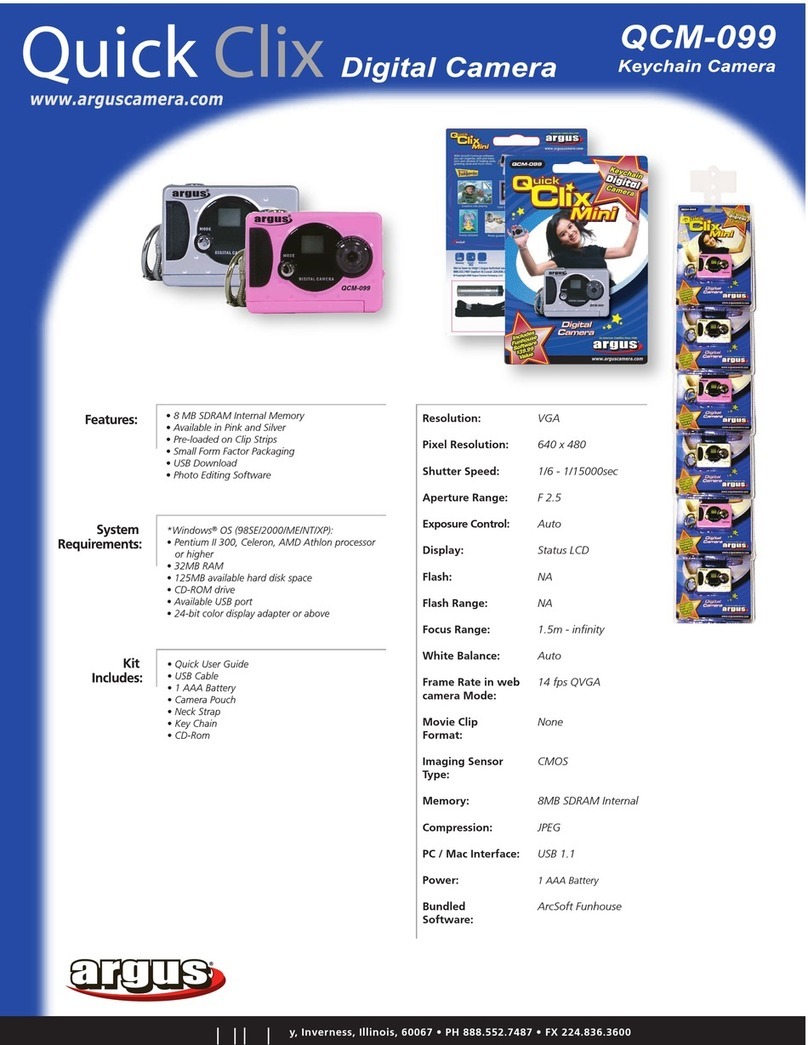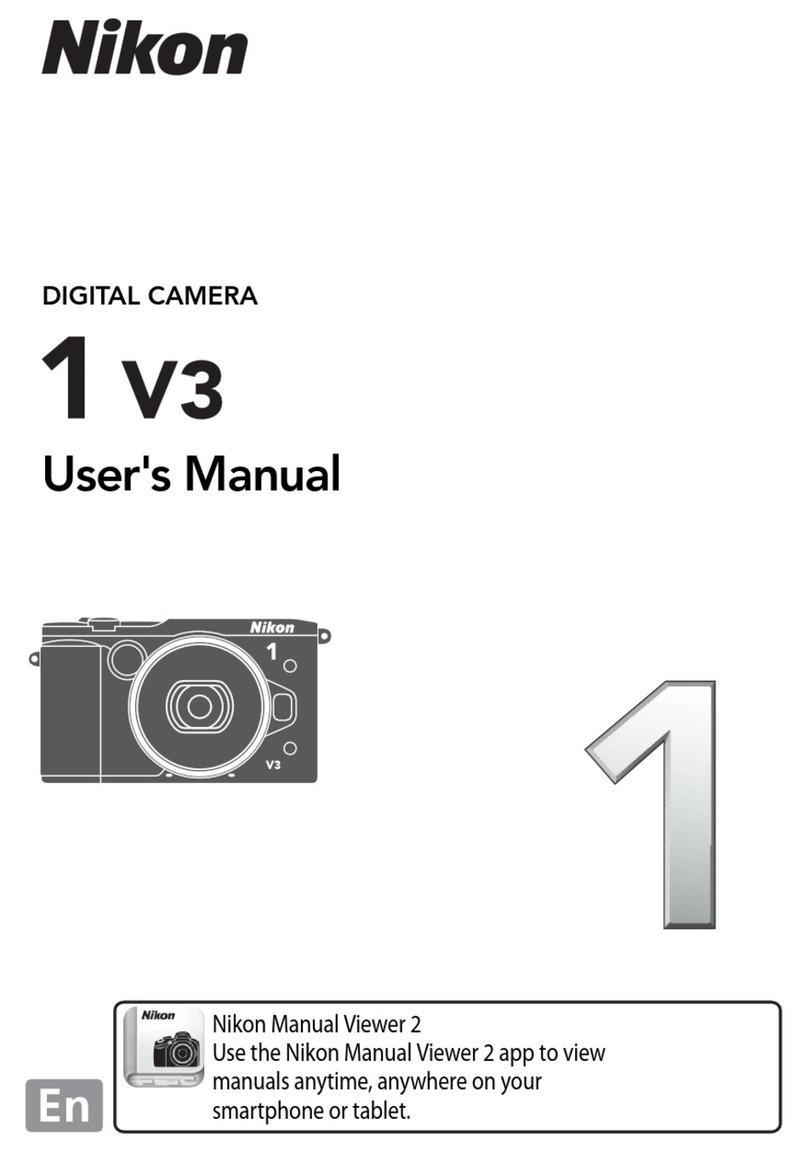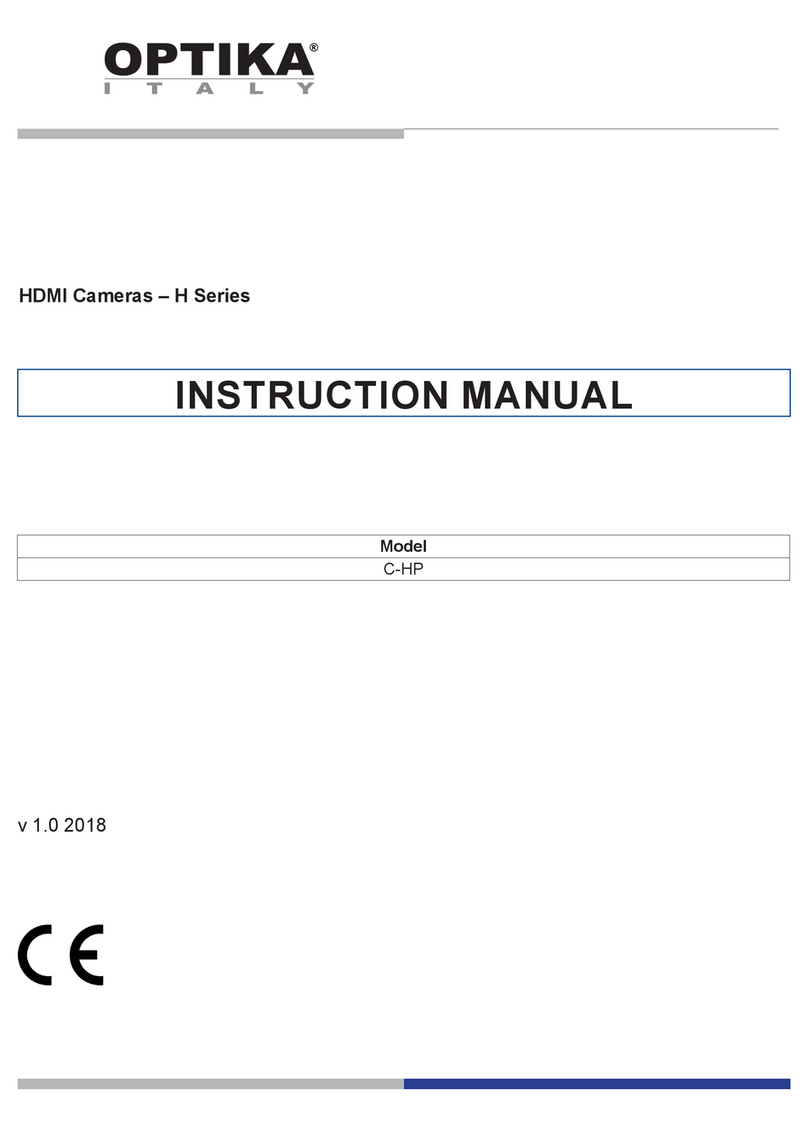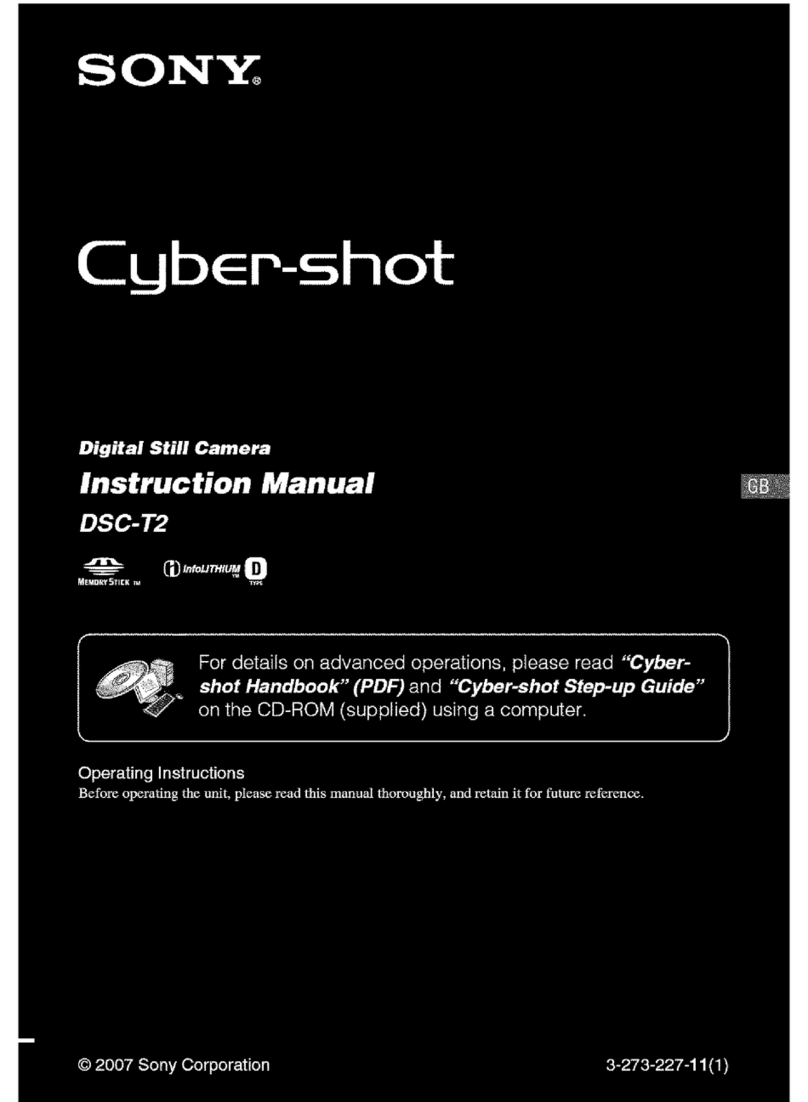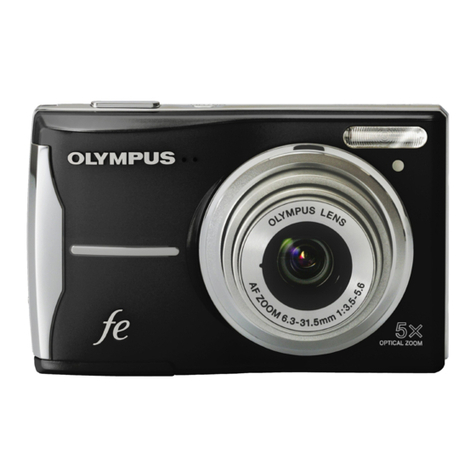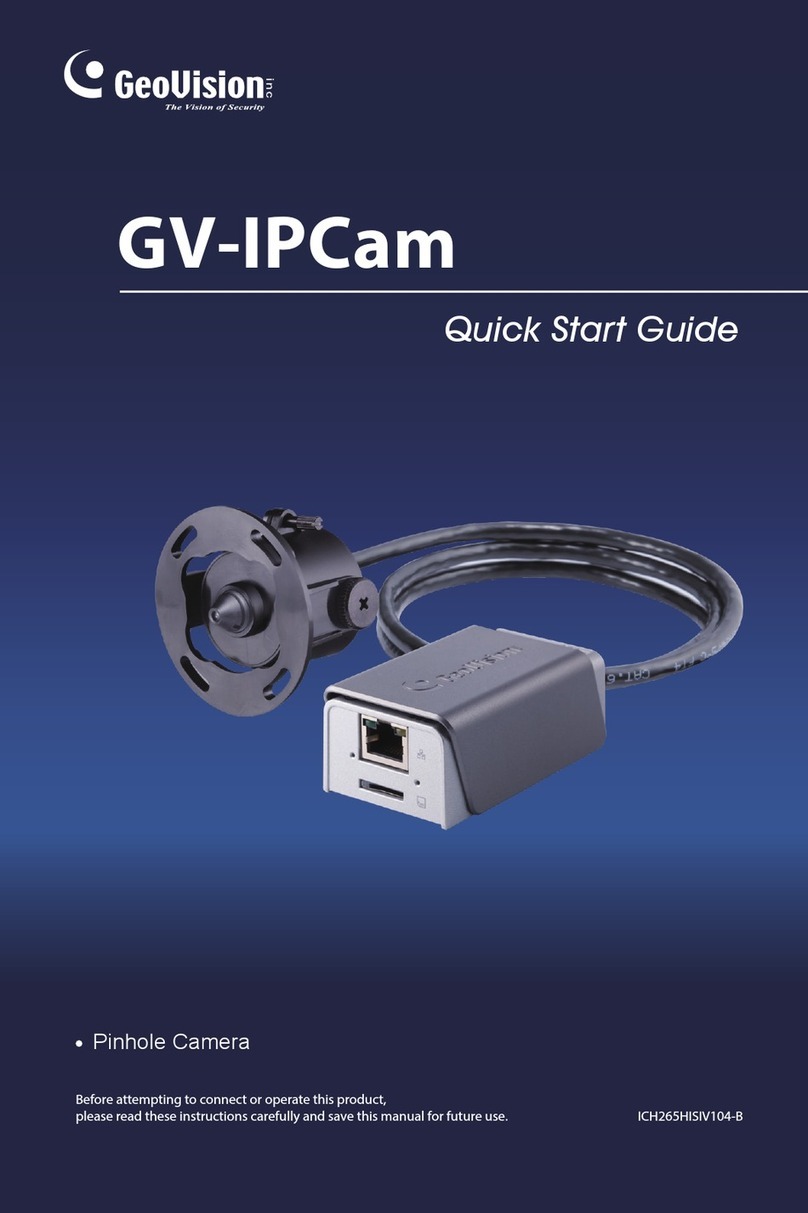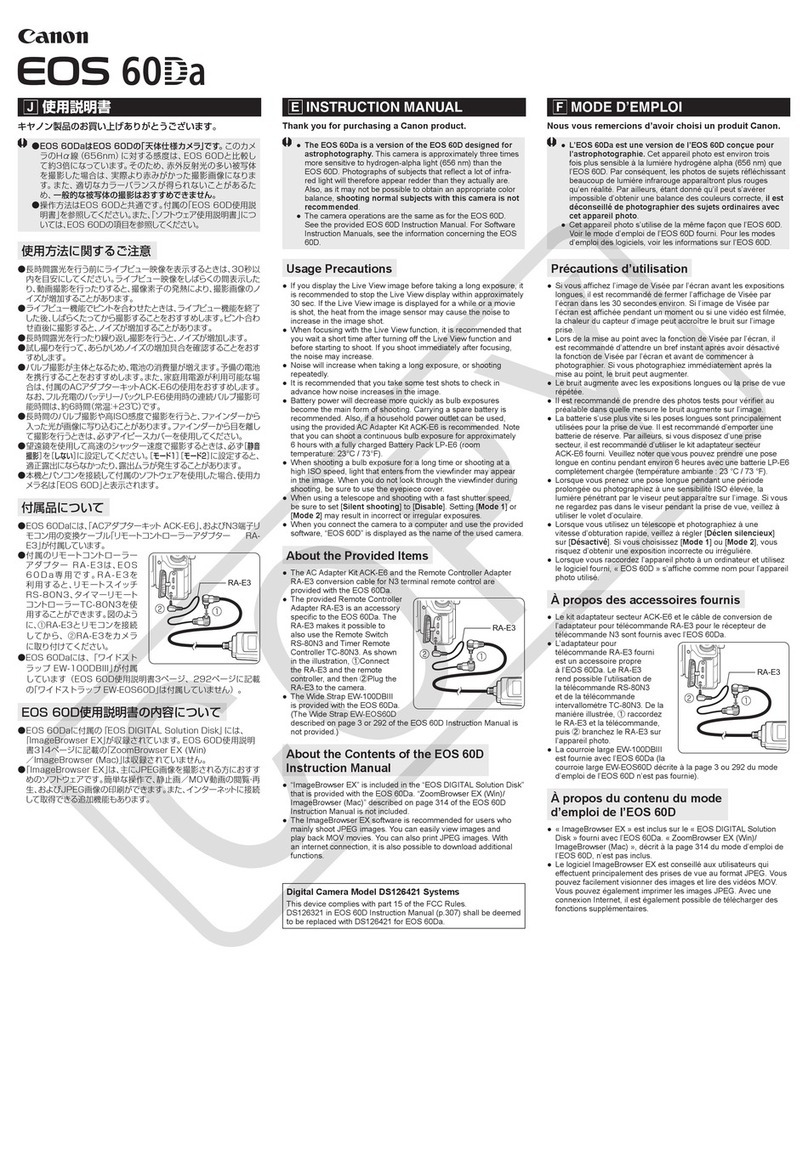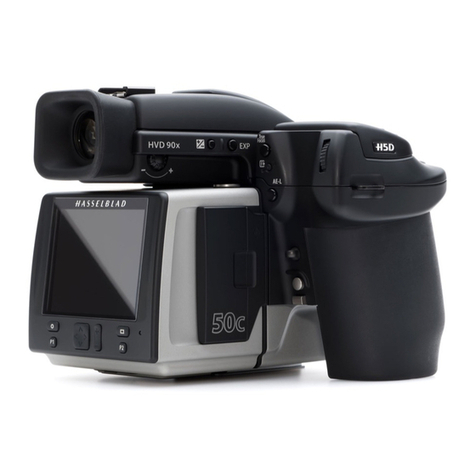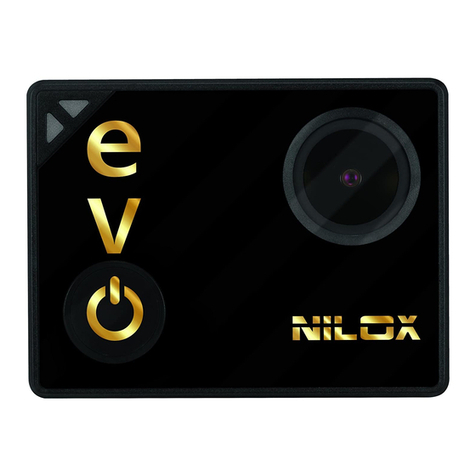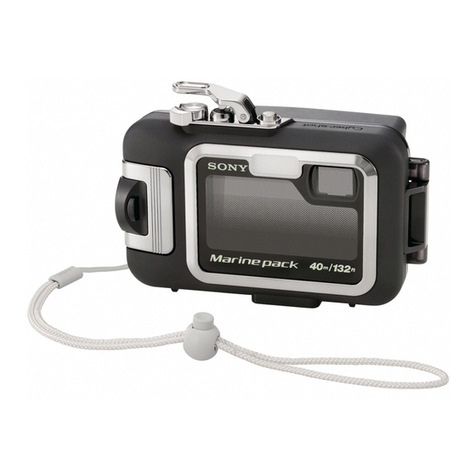Graflex 35 User manual

,,~
+!~t&~
v~
w~
::;
"PLctu1tPA
~~0WtJ
GRAPHIC
~
35

Get
Acquainted
with
your
Camera
Congratulat
i
ons
!
You
have
acquired
one
of
the
finest
cameras
avail-
able.
It
has
been
su-
perbly
designed
and
precision-made
by
the
world's
most
skilled
photographic
crafts-
men.
The
more
you
use
it,
the
more
you'll
ap-
preciate
the
wisdom
of
your
selection.
2
Before
you
use
your
camera,
we
suggest
you
become
thoroughly
acquainted
with
its
many
features.
Knowledge
of
these
features
will allow
you
to
operate
your
camera
with
complete
confidence.
Shuller
Cocking
Cable
Release
Sockel
Diaphragm
Lever
Visi·Ready
faalage
Scale

Rangeflnder
Windows
Focusing Push
Buttons
CONTENTS
Loading
.
Setting,
Tripping
the
Shutter
.
Self
-
Timer
.
..
Cable
Rele
ase
.
Slow
Spe
e
ds,
Tim
e
Exposur
es .
Double
Exposure
.
Film
Lock
R e
lease
. .
Pages
4,
5,6
7
8
9
9
10
10
Setting
the
Diaphragm
. 11
Red
Dot
Setting
for
Average
Outdoor
Pictur
es . . . . . . . . . . . 12
Push
Button
Focusing
. . . . . . . . 13
Visi-Ready
Focusing
. 14
Depth
of
Field
Scale
. . . . . . . . . 15,
16
Taking
th
e
Picture
. 17
Advancing
th
e
Film
. 18
Removing
the
Film
.
19
Spectramatic
Flash
Settings
. 20, 21
Flash
Settings
. . 22
Graflash
Units
.............
23, 24, 25
Tips
on
Taking
Pictures
. 26, 27
Care
of
the
Camera
. . . . 28
Accessories
for
Gr
a
phic
35. 29,
30
Specifications
. . . 31
3

LOADING
THE
Your
new
Graphic
35 will
accept
standard
20
or
36
exposure
35mm.
film
cartridges,
(
black
and
white
or
color).
Loading
is
quick
and
easy
.
Never
load
or
unload
in
bright,
direct
light.
Simply
follow
the
steps
on
these
pages.
2.
Insert
the
film
cartridge.
Turn
the
re-
wind
knob
until
the
cartridge
is
en-
gaged.
1,
Turn
the
lock
"lever"
counterclock-
wise
as
far
as
it
will go.
Slide
the
camera
back
down
74
fI
and
lift
off.
3.
Insert
end
of
film
through
the
slot
in
'
the
take-up
reel.
Make
sure
sprocket
teeth
engage
holes
in
film
and
film
winds
straight.
Turn
winding
knob
clockwise
(in
direction
of
arrow)
until
it
stops.

Next,
cock
the
shutter
by
moving
the
cocking
lever
in
the
direction
of
the
arrow
at
the
top
of
illustration
A.
Push
it
over
until
it
locks
and
the
red
dot
on
the
back
of
the
lever
shows.
Now
trip
the
body
release
lever
(
bottom
arrow,
illustration
A)
on
the
front
of
the
camera
by
pulling
outward
(
away
from
the
shutter
)
as
far
as
it
will go.
This
lever
first
releases
the
film
wind
interlock
and
then
the
shutter
tripping
interlock.
If
the
film
interlock
is
released
but
the
body
release
is
not
moved
far
enough
to
trip
the
shutter
before
it
returns
to
the
normal
(
vertical
)
position
the
shutter
will
have
to
be
tripped
directly
(
see
page
7)
or
the
film will
have
to
be
wound
so
that
the
body
release
can
be
used
normally.
5.
Turn
film
winding
knob
again
in
direction
of
arrow
until
it
locks.
The
special
spacing
mechanism
in
your
Graphic
35
prevents
the
possibility
of
tearing
the
film
at
the
sprocket
since
after
the
proper
length
of
film
has
been
advanced
the
winding
knob is
locked
and
cannot
be
over-
turned.

6.
Be
sure
film is
winding
straight,
if
not,
move
it
up
or
down
on
the
take-up
reel
until
it
will
wind
straight.
Place
back
over
the
film
and
slide
it
into
the
closed
position.
Lock
QY
turning
locking
lever
clockwise,
as
far
as
it
will
go
as
shown.
IMPORTANT
-
Repeat
steps
4
and
5 twice
turning
the
winding
knob
as
far
as
it
will
go
each
time.
The
film is
now
positioned
and
ready
for
the
first
exposure.
Note
:
Unless
the
self-timer
(page
8) is
to
be
used
be
sure
the
synchro-setting
lever
on
the
side
of
the
shutter
is
at
"
M"
or
"X"
for
general
daylight
use.
For
flash
settings
see
pages
20
and
21.
7.
Set
exposure
counter
at
"20"
for
20-exposure
films
and
at
"0"
for
36-exposure
films.
To
set,
press
down
on
the
center
of
the
dial
and
turn.
After
each
exposure,
turn
the
film
winding
knob
until
it
locks;
the
exposure
counter
dial
will
automati-
cally
turn
one
full
revolution
plus
one
space
and
will
tell
you
how
many
exposures
you
have
left.

SETTING
THE
SHUTTER
In
addition
to
a com-
plete
range
of
speeds
the
Prontor
SVS
shut-
ter
fitted to
your
cam-
era
has
a
number
of
unusual
features.
Check
the
following
paragraphs
closely so
that
you
may
take
ad-
vantage
of
them.
For
flash synchronization
setting
see also
page
22.
SHUTTER
SPEEDS
All figures
on
the
shutter
speed
ring
represent
fractions
of
a
sec-
ond.
2-1/2
second,
10-1/
10
second,
etc.
Turn
the
shutter
speed
ring
until
the
speed
desired
is
oppo-
site
the
triangular
mark
on
the
top
front
of
the
shutter
.
COCKING
THE
SHUTTER
Holding
the
camera
as
shown,
push
the
cocking
lever
over
until
it
locks.
The
red
dot
on
the
back
of
the
cocking
lever
then
indicates
that
the
shutter
. is
ready
to
be
tripped.
You
may
set
the
spee
d
ring
and
cock
the
shutter
in
any
sequence
you
choose
.
TRIPPING
THE
SHUTTER
After
winding
the
film,
use
the
body
release
lever
as
previously
directed
(
page
5).
If
you
wish
to
trip
the
shut-
ter
directly,
press
the
shutter
release
lever
or
its
operati
ng
arm
underneath
the
guard
next
to
the
body
release
lever.
If
you
use
this
method
see
page
10
for
release
of
film
wind
interlock.
In
the
event
that
you
may
wish
to
trip
the
shutter
with
the
body
release
lever
when
there
is
no
fllm in
the
camera,
the
film
sprocket
must
be
advanced
manually
until
it
stops,
at
which
point,
it
will
release
an
interlock
so
that
the
shutter
will
be
tripped
when
the
body
release
is
pressed.
7

8
HOW
TO
USE
THE
SELF-TIMER
This
feature
has
two
important
uses.
Primarily
it
allows
the
person
taking
the
picture
to
appear
in
it
himself.
The
built
in
self-timer
op
e
rates
when
the
synchro
pointer
or
lever
is
set
at
V.
It
can
be
moved
to
or
from
"V"
at
any
time,
before
or
after
the
shutter
is
cocked.
When
the
body
release
lever
is
pressed
,
there
will
be
a
delay
of
about
ten
seconds
before
the
shutter
trips.
The
lever
can
be
moved
from
"V"
at
any
time
before
or
after
the
shutter
has
been
cocked.
Another
important
application
of
the
self-timer
is
in
the
use
of
slow
shutter
speeds
when
no
tripod
is
handy
and
the
camera
cannot
be
satisfactorily
hand
held.
Set
the
shutter
as
desired,
set
the
self-timer
lever
at
"V"
and
press
the
body
release.
The
ten
seconds
elapsing
before
the
shutter
trips
can
be
used
to
brace
the
camera
with
both
hands
against
some
nearby
solid
object
.
If
the
synchronizer
lever
has
been
accidentally
set
at
"
V,"
it
can
be
moved
to
either
"X"
or
"M"
at
any
time,
either
before
or
after
the
shutter
has
been
cocked.
The
shutter
can
be
set
and
cocked
in
any
sequence
you
choose
.
It
does
not
matter
whether
you
set
the
synchro
lever
before
or
after
cocking.
FLASH
SYNCHRONIZATION
When
the
pointer
is
set
at
"V,"
flash
synchronization
produced
is
the
same
as
that
for
the
"X"
setting
.
See
page
22.

CABLE RELEASE
An
accessory
cable
release
can
be
u
sed
at
any
speed.
It
is
particularly
useful
to
avoid
camera
movement
when
slow
speeds
are
used.
Any
standard
Euro-
pean
or
American
made
cable
release
will fit.
When
using
slow
shutter
speeds,
be
sure
the
camera
is
on
a
tripod
or
any
other
steady
support.
U
SI
NG
SLOW SPEEDS
The
B (
bulb
setting
) is
for
long
exposures.
Cock
the
shutter.
Press
the
body
release
lever
to
the
right
and
hold
it
there.
The
shutter
will
remain
open
until
the
release
lever
is
freed.
Use
B
and
the
slower
speeds
such
as
1, 1/2
and
1/
10
only
when
the
camera
is
on
a
solid
support
such
as
a
Graphic
tripod.
The
use
of
a
cable
release
will
further
eliminate
the
possibility
of
camera
vibration.
TI
ME E
XPOSURES
For
time
exposures
-
exposures
of
several
seconds
or
more
-
use
the
B
setting
described
above
with
a
cable
release
as
directed.
A
TBl
cable
release
is a
special
type
of
cable
release
which
can
be
locked
down
to
hold
the
shutter
open
for
long
exposures.
Your
Graflex
dealer
can
supply
this
special
release
for
you.
IMPOR-
TANT:
When
a
cable
release
has
been
used,
the
film
transport
will
remain
locked.
See
next
page
for
release
of
the
film
winding
knob.
9

For
special
effects,
often
described
in
photographic
books
and
articles
in
photographic
magazines
it
may
be
desirable
to
make
two
or
more
exposures
without
ad
vancing
the
film.
It
is
usually
best
to
lock
the
cam-
era
on
a
firm
support
so
that
the
images
will
be
prop-
erly
located
on
the
film.
Use
a
cable
release
(
rather
than
the
body
release
)
to
trip
the
shutter
each
time
after
it
has
been
cocked
.
Make
as
many
exposures
as
you
wish
to
in
this
manner.
After
all
exposures
have
been
made,
unlock
the
film
winding
mechanism
by
following
steps
given
in
paragraph
on
FILM
RE-
LEASE,
below.
FI
~
M
RELEASE
NOT
E:
When
the
shutter
is
tripped
with
a
cable
release
or
directly
with
the
shutter
release
lever
under
the
guard,
the
film
transport
mechanism
which
is a
part
of
the
double
exposure
preventive
device
will
still
be
locked.
To
unlock
the
film
transport
mechanism:
(1
)
Cock
the
shutter
and
hold
lever
down
while
(2)
pulling
right
on
the
body
release
lever.
(3)
Allow
body
release
lever
to
return
to
normal
and
(4)
re-
move
pressure
from
the
cocking
lever.
It
will
stay
cocked
and
then
the
film
can
then
be
wound
forward
with
the
film
winding
knob.
FLASH
LAMP
FAILURE
In
the
event
that
a
flash
lamp
may
fail
to
fire
and
the
scene
to
be
photographed
does
not
contain
any
brilliantly
illuminated
areas
such
as
lamp
bulbs,
candles,
windows
with
daylight
visible,
etc.,
it
is
generally
safe
to
make
another
exposure
on
the
same
piece
of
film.
Follow
instructions
above
for
intentional
double
exposure.
10

SETTING
THE
DIAPHRAGM
The
right
combination
of
shutter
speed
and
lens
opening
is
most
important.
You
will find
excellent
exposure
in-
formation
in
the
in-
struction
sheet
packed
with
the
film.
Use
it
carefully, since
it
is
an
accurate,
dependable
guide.
The
lens
opening
is
controlled
by
the
diaphragm
within
the
lens
and
is
measured
in
Hf
/
stops."
The
larger
the
f/
stop
number,
the
smaller
the
dia-
phragm
opening
and
the
less
light
admitted
to
the
film,
and
vice
versa.
(
The
opening
8
lets
in
twice
as
much
light
as
11;
5.6
twice
as
much
as
8,
and
so
on.
)
To
set,
simply
move
the
diaphragm
lilVer
until
the
red
line
of
its
pointer
lines
up
with
the
black
line
opposite
the
f/
stop
number
you
select.
NOTE:
Lens
aperture,
diaphragm
opening,
stop
opening,
f/
stop,
f/
number
and
similar
phrases
are
often
used
synonymously
(although
inaccurately).
Any
change
in
the
diaphragm
setting
requires
a
compensating
change
in
the
shutter
speed
if
identi-
cal
exposure
is
to
be
obtained.
For
example,
f/8
changed
to
f/11
requires
the
change
in
shutter
speed
from
1/
50th
of
a
second
to
1/
25th,
unless
different
exposure
is
desired.
11

For
your
convenience
,
your
Graphic
"35"
Camera
has
"red
dot"
settings
to
help
you
when
using
daylight
color
film,
when
photographing
average
subject
matter
in
clear
sunlight.
Set
the
shutter
speed
at
the
red
1/
50th
shutter
speed
mark.
When
using
daylight-type
Kodachrome
and
Ansco
Color
film,
set
the
diaphragm
lever
at
the
red
dot
between
f/5.6
and
f/8.
Cock
the
shutter
and
you
will
be
ready
for
average
subjects
in
bright
sunlight.
Whim
using
daylight-type
Anscochrome
or
Ekta-
chrome,
set
the
diaphragm
lever
at
fi
ll,
cock
the
shutter
and
you
will
be
ready
for
average
subjects
in
bright
sunlight
.
When
using
other
color
films
or
black
and
white
films, follow t
he
film
manufacturer's
instruction
sheet
packed
with
the
film
or
use
a
good
exposure
meter
as
direct
ed
in
instruction
manual.
A V
ERA
G E SUBJ ECTS
Refers
to
people
and
scenery
nearby
in
clear
sunlight
.
When
photographing
dark
areas
,
subject
matter
in
the
shade
or
in
dull
light
, use a
larger
diaphragm
opening
.
Snow,
beach
and
water
scenes
as
well
as
distant
scenes
in
clear
atmosphere
require
a
smaller
diaphragm
opening.
Be
sure
to
consult
the
film
manufacturer's
instruction
sheet
before
taking
pictures
under
these
conditions.
12

How
to hold your camera.
Hold
your
Graphic
"35"
as
shown
here
and
you
will find all
controls
and
adjustments
at
your
finger-
tips.
It
is
never
nece3Sary
to
take
either
hand
off
the
camera
With
your
thumbs
at
the
back
of
the
camera,
your
index
fingers will
rest
on
the
focusing
push
buttons
with
the
middle
fing~r
of
the
right
hand
in
perfect
position
to
trip
the
body
release
lever.
With
the
back
of
the
camera
towards
you,
use
the
right
hand
window
for
viewing
and
composing.
Use
the
left
hand
window
for
rangefinder
focusing.
Pressure
on
either
push
button
actuates
the
split
field
coupled
rangefinder.
Push
first
one
button,
then
the
other,
until
the
uppe~
half
of
the
image
in
the
range
finder
window
exactly
lines
up
with
the
lower
half.
Cock
the
shutter
by
pushing
the
cocking
lever
over
with
the
index
finger
of
the
left
hand
.
The
camera
does
not
have
to
be
moved
away
from
the
eye.
After
exposure,
the
film
can
be
easily
wound
by
pulling
the
inside
of
the
index
finger
of
your
right
hand
around
and
across
the
front
of
the
film
wind-
ing
knob.
This
permits
rapid
wind
making
the
camera
ready
for
the
next
exposure.
IN FOCUS OUT OF FOCUS

Sometimes
it
is
desirable
to
"pre-focus"
the
camera
in
order
to
make
the
shot
quickly
without
attracting
attention.
Simply
esti-
mate
the
distance
to
the
subject
and
use
the
push
button
levers
to
bring
the
estimated
footage
figure
into
position
opposite
the
foot-
age
indicator
arrow
(below
the
figure 30
in
illustration
)
on
the
Visi-Ready
Scale.
Cock
the
'shutter
and
the
camera
is
ready.
For
general
scenic
and
vacation
shots,
use
this
method
for
simplified
picture
taking.
With
Kodachrome
and
Ansco
Color
film,
set
the
diaphra
'
gm
at
f/11
and
Visi-Ready
Footage
Scale
at
30
feet
as
shown
above
.
All
objects
from
approximately
15
feet
to
infinity
will
be
in
sharp
focus.
Note:
For
this
simplified
method
to
obtain
proper
exposure,
you
should
set
the
shutter
speed
at
1/
25th
of
a
second
for
the
above
films.
If
using
daylight-type
Ansco-
chrome
and
Ektachrome,
the
faster
shutter
speed
of
1/
50th
may
be
used
with
the
f/11
setting.
This
shutter
speed
can
also
be
used
with
some
black
and
white
films.
If
you
shoot
in
bright
sunlight,
'your
camera
will
always
be
ready
for use.
14

NOTE:
DEPTH OF FIELD SCALE
Any
change
in
the
diaphragm
setting
demands
a
compensating
change
in
the
shutter
speed.
Example:
f/8
changed
to
f/ll;
1/50
sec.
changes
to
1/25
sec.
Depth
of
field will
help
you
to
include
a
great
deal
of
subject
matter
in
sharp
focus
in
the
picture.
In
order
to
utilize
it
to
the
best
advantage,
the
Visi-
Ready
scale
has
two
sets
of
diaphragm
numbers
across
the
front
of
it,
above
the
dial
con-
taining
the
focusing
scale.
Simply
focus
through
the
rangefinder
in
the
normal
manner
and
determine
the
exposure
required
by
the
sub-
ject,
set
the
shutter
speed
and
diaphragm
settings
in
the
usual
manner
.
The
two
sets
of
figures
on
the
depth
of
field
scale
represent
dia-
phragm
numbers
or
settings.
As
an
example,
assume
the
exposure
will
be
1/
50
at
f/11,
and
the
subject
is
at
a
distance
of
about
6',
you
will find
that
the
area
of
sharpest
focus
(depth
of
field) will lie
within
the
distances
indicated
on
the
focus-
ing
scale
between
the
two
l1's
on
the
depth
of
field
scale.
In
the
example
illus-
trated
this
would
be
from
about
5'
to
8'
.
If
f/
16
were
used
the
depth
of
field
as
shown
would
extend
from
less
than
5'
to
more
than
8'
. 15

16
DEPTH OF FIELD SCALE
In
order
to
obtain
maximum
depth
of
field
at
any
given
diaphragm
opening,
set
the
infinity
mark
(
00
)
on
the
fo-
cusing
scale
at
the
figure
on
the
left
side
of
the
scale
repre-
senting
the
diaphragm
opening
which
you
will
be
using.
The
figure
on
the
focusing
scale
op-
posite
the
same
diaphragm
opening
number
on
the
other
side
of
the
scale
will
represent
the
closest
distance
within
which
an
object
will
be
very
sharp.
For
instance,
in
the
example
illustrated,
the
camera
would
nominally
be
focused
on
about
30'
and
the
subject
matter
which
would
be
in
sharpest
focus
would
be
from
12
'
to
15
'
to
infinity
(00)
when
the
diaphragm
opening
is
used
at
f/
1l.
You
may
find
that
for
your
own
personal
use
you
can
use
even
larger
diaphragm
openings
than
those
indicated
on
the
Visi-Ready
scale,
since
you
may
not
require
the
same
critical
sharpness
for
which
this
scale
has
been
computed.
This
may
be
helpful
to
you
in
making
many
of
your
pictures.

Check These Adjustments
Before You Release
The ShuHer
You
have
become
acquainted
with
your
fine
new
Graphic
35.
You
know
what
each
contro
l is
for
and
where
it
is
located.
You
have
loaded
your
camera
with
film,
made
sure
the
back
is
tightly
locked,
advanced
the
film
to
"taking"
position,
and
made
ready
to
take
your
first
picture.
Now
is
the
time
for
the
photog-
rapher
who
wants
exceptional
pictures
right
from
the
start
to
relax
and
check
his
adjustments
before
tripping
the
shutter.
Make
carefulness
a
habit.
You'll
save
time,
money
and
picture-taki
ng
disappointment.
1.
Mak
e
sure
the
shutter
speed
ring
is
set
to
th
e
right
shutter
sp
ee
d .
2. M
ake
s
ur
e
that
the
dia-
phragm
l
ever
is
set
at
the
correct
f
stop.
3.
Be
sure
the
red
dot
on
the
shutt
er
coc
king
lev
er
shows
that
th
e
cocking
lever
is
set.
4.
Check
through
th
e
range
-
finder
window
to
make
sure
your
s
ubj
ect
is
still
in
focus.
With
your
eye
at
the
view-
5. finder
window
ch
ec
k
com-
position
and
framing.
NOW
trip
the
body
rele
ase
lev
er.
You'll
hav
e a fine
pictur
e!
Wind
the
film
for
the
next
picture.
17

After
each
picture,
make
it
a
practice
to
advance
the
film
immediately
so
that
you
are
ready
for
the
next
one.
You
never
know
when
that
once-in-a-lifetime
picture-
taking
opportunity
is
going
to
arrive.
Turn
winding
knob
in
direction
of
arrow
until
it
locks.
This
prevents
accidental
double
exposure
and
also
advances
the
Rlltomatic
film
counter.
The
one
remaining
step
before
taking
your
next
exposure
is
to
cock
the
shutter.
18

HOW
TO
REMOVE
THE
FILM
FROM
THE
CAMERA
When
the
exposure
dial
on
your
Graphic
35
reads
"zero"
you
will
have
taken
all
the
pictures
on
the
roll.
Usually
,
it
will
be
impossible
to
wind
the
film
past
this
point.
The
exposed film
must
now
be
rewound
back
into
the
light
-
tight
cartridge
before
removing
from
camera.
Lift
the
winding
knob
and
turn
it
slightly
to
hold
it
in
th
e
"o
ut"
position
.
This
re
leases
the
film
transport
in-
terlockin~
mechanism
so
film
ca
n
be
rewound
into
the
cartridge.
Release
the
lock
on
the
bottom
of
the
camera
and
remove
the
back.
Exposed
films
should
be
processed
promptly
.
Fol-
l
ow
manufacturer's
in-
structions
packed
with
the
film.
Turn
rewinding
knob
in
direction
of
arrow
until
the
exposure
dial
stops
turning.
You
now
have
all
expused
film
safely
enclosed
within
the
cartridge.
Lift
out
the
cartridge.
Turn
winding
knob
until
it
snaps
down
into
place.
Reload
your
camera
so
that
it
will
always
be
ready
for
use.
19

1.
Slide
your
Graflash
Unit,
PL
or
Be,
into
the
flash
unit
clip
as
far
as
it
will go.
Do
not
attach
or
remove
with
unfired
l
amp
in
the
socket.
2.
Insert
a flash
lamp
in
reflector
socket
as
shown.
See
al
so
page
23.
3.
Set
the
synchro
lever
at
the
yellow
dot
(M )
or
red
dot
(X )
position
as
directed
in
tab
le
on
next
p:;lge.
4 .
Set
the
shutter
speed
as
directed
on
the
tab
le
on
page
21.
Focus
the
camera
and
note
the
color
bar
next
to
the
focusing
scale
pointer
in
the
focusing
sca
le
window.
Set
the
diaphragm
scale
pointer
to
the
same
co
l
or
bar
on
its
scale.
After
taking
your
picture,
release
the
lamp
by
pressing
the
ejector
button.
See
page
25.
20
Table of contents
Other Graflex Digital Camera manuals
Popular Digital Camera manuals by other brands
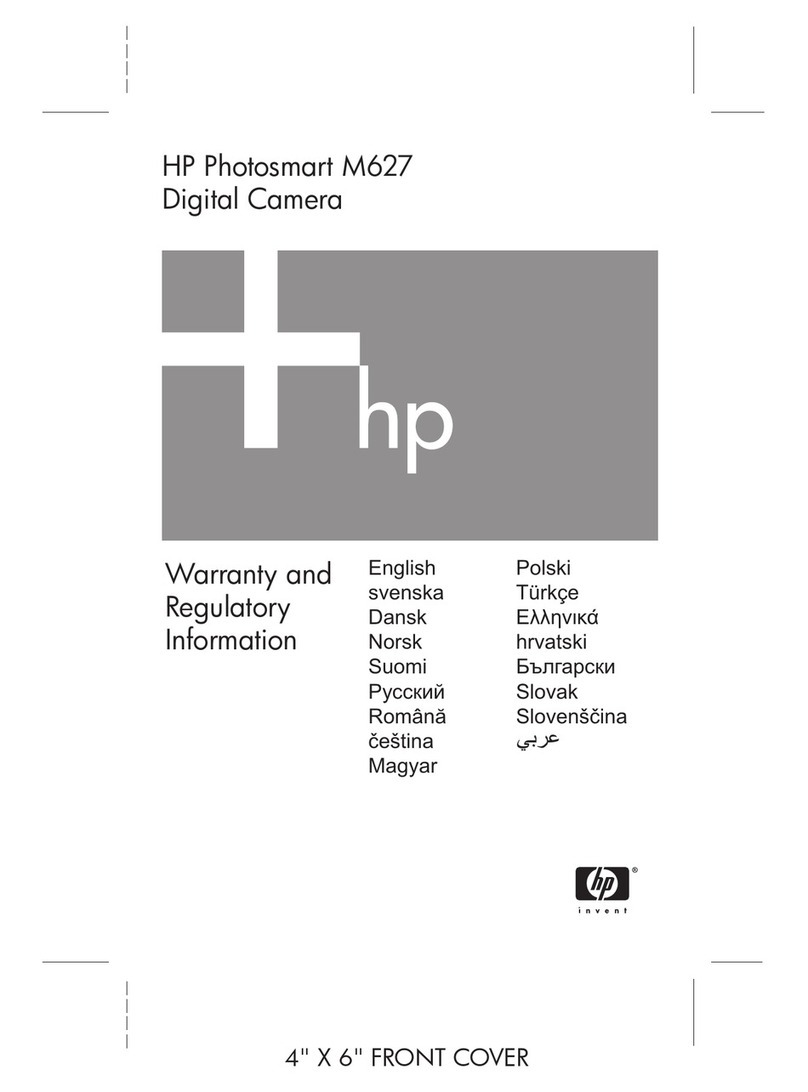
HP
HP PhotoSmart M627 Warranty and Regulatory Information
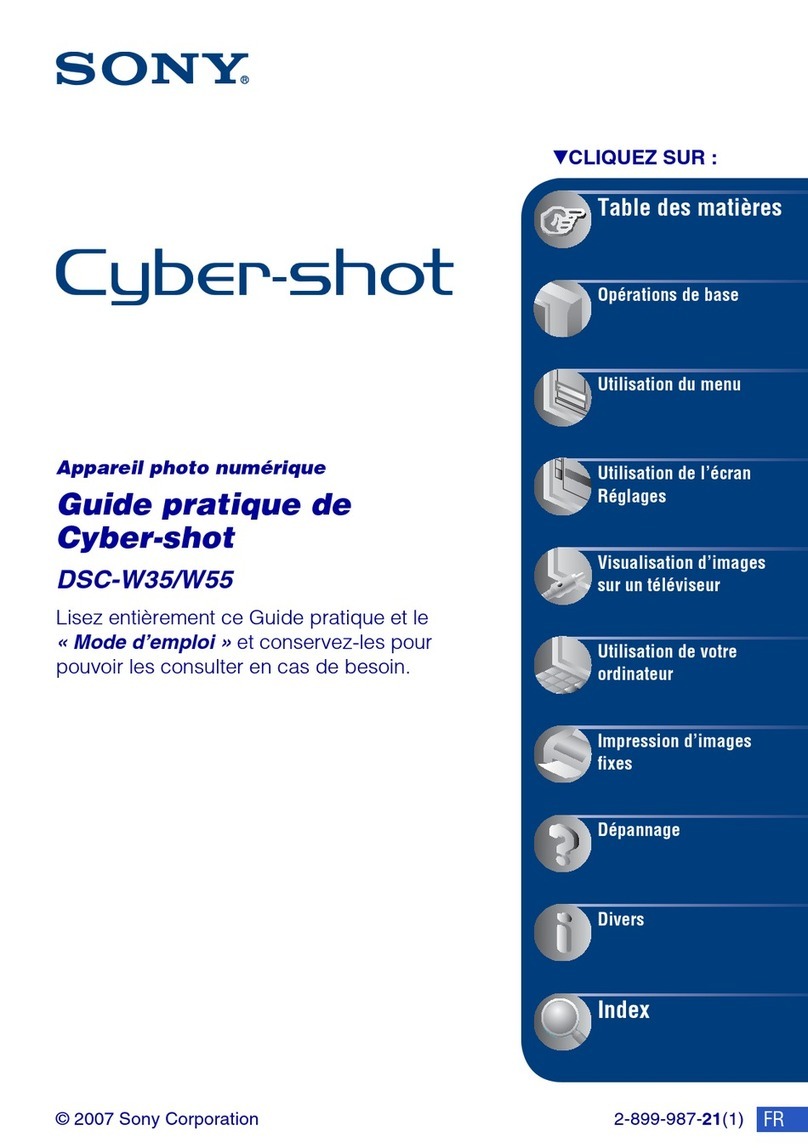
Sony
Sony CYBER-SHOT W55 Practical user's guide

Epson
Epson PhotoPC PhotoPC Specifications
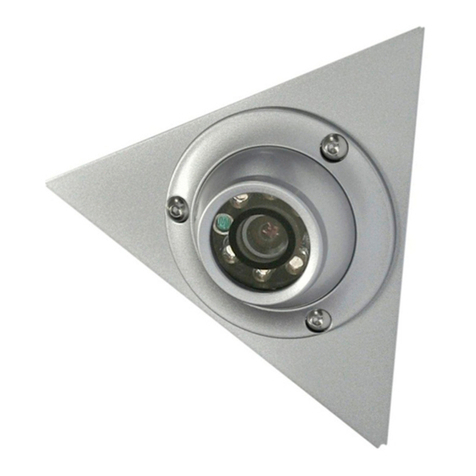
Ikegami
Ikegami ICD-E11 user manual
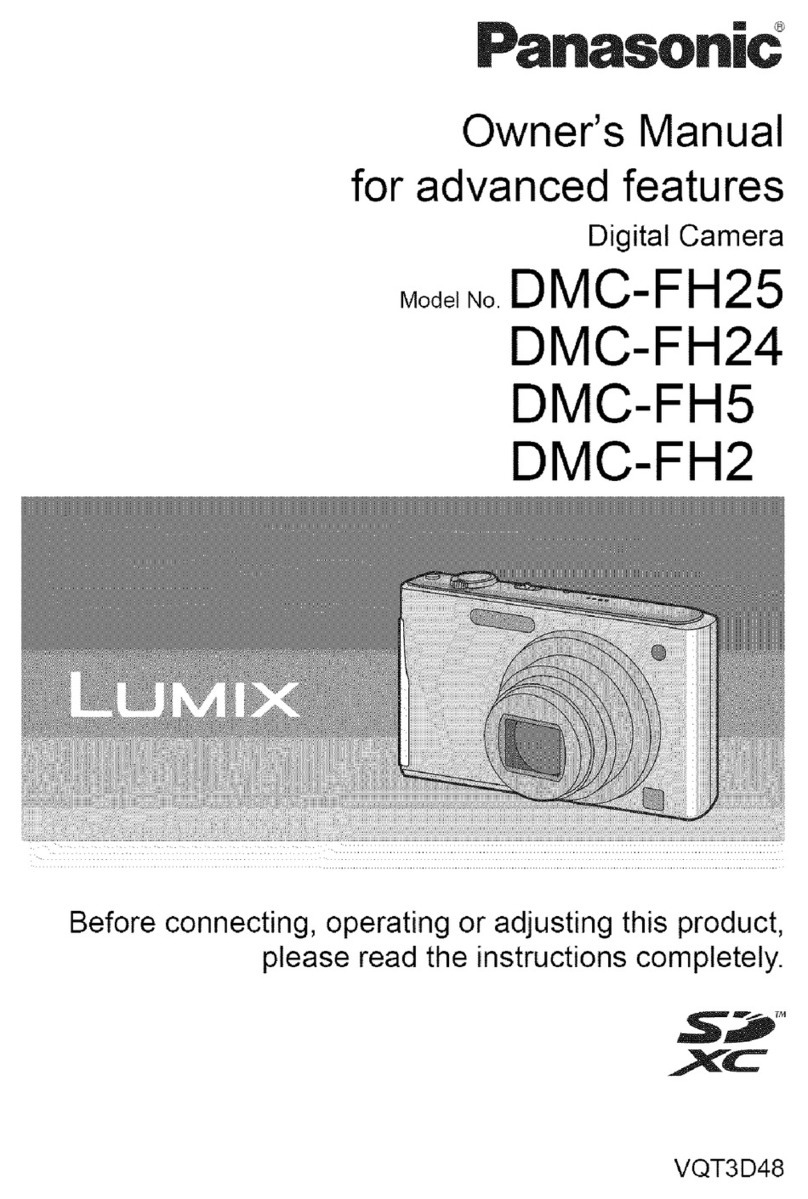
Panasonic
Panasonic Lumix DMC-FH24 owner's manual

Aigis Mechtronics
Aigis Mechtronics HS9384-2H Installation and operating instruction

